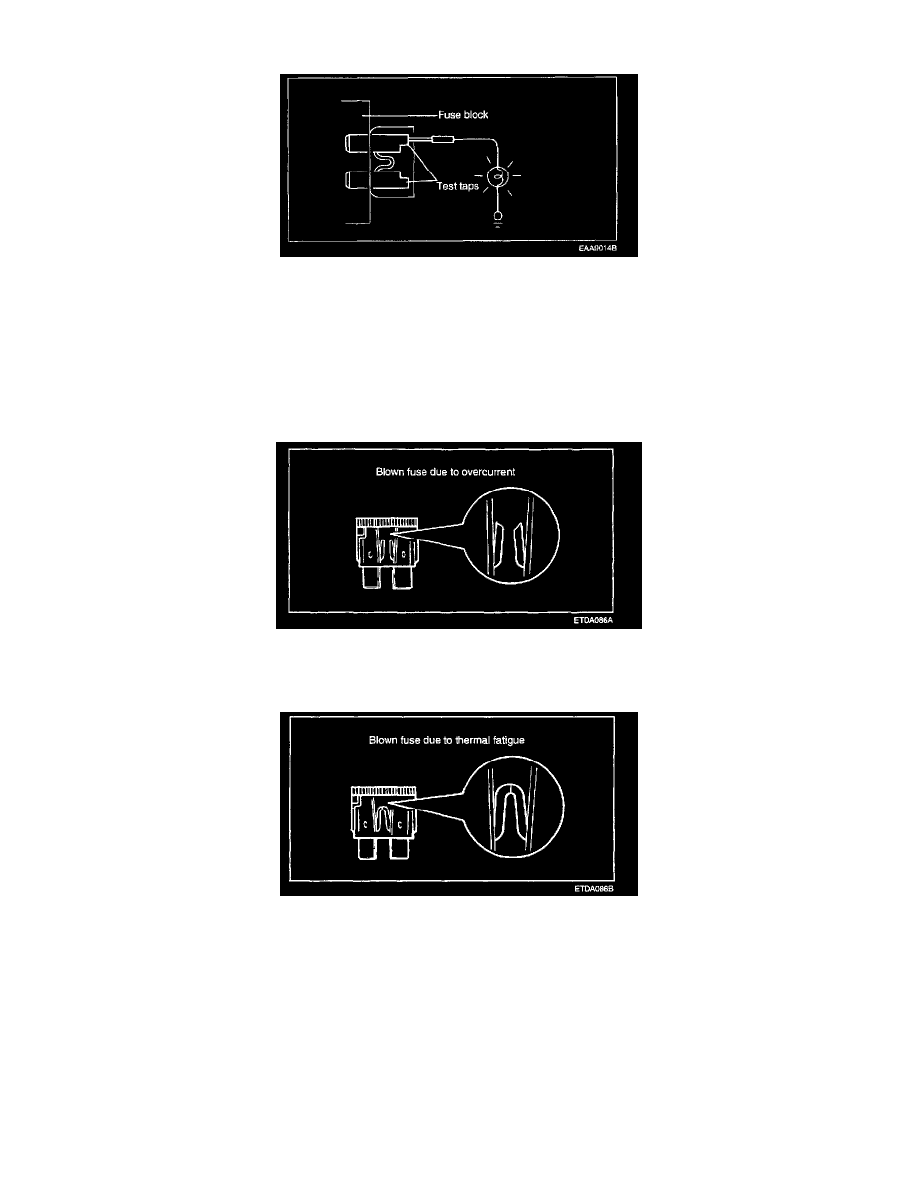Santa Fe L4-2.4L (2001)

Fuse: Testing and Inspection
CHECKING FUSES
A blade type fuse has test taps provided to allow checking the fuse itself without removing it from the fuse block. The fuse is good if the test lamp lights
up when its one lead is connected to the test taps (one at a time) and the other lead is grounded. (Turn the ignition switch so that the fuse circuit becomes
operative.)
FUSES INSPECTION
When a fuse is blown, there are two probable causes. The two causes can easily be determined by a visual check after removing the fuses.
1. Fuse blown due to over-current.
Prior to replacing the fuse with a new one, check the circuit for a short and the related parts for abnormal conditions. Only after the correction of a
short or replacement of abnormal parts, should a fuse with the same ampere rating be installed.
2. Fuse blown due to repeated on-off current.
Normally, this type of problem occurs after a fairly long period of use, and is less frequent than #1 above. In this case, you may simply replace
with a new fuse of the same capacity.
